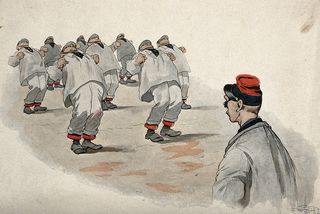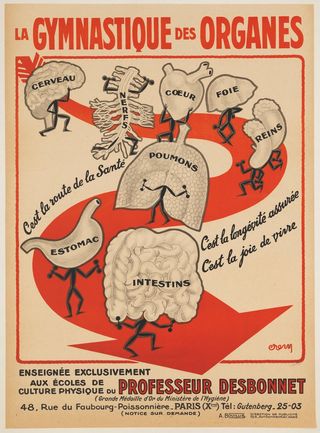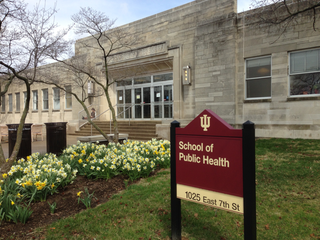Cognition
A Body in Motion: Exercise and Cognition
The science behind the relationship of exercise to cognitive functioning
Posted April 15, 2019

Breaking Away (1979) is the critically acclaimed and Academy Award-winning film, set on the picturesque campus of Indiana University at Bloomington. The four local adolescent boys of the story are “cutters,” so-named because their fathers, who never had the opportunity to get a college education, despite living in Bloomington, had been stone cutters for some of the University’s majestic buildings. Following high school graduation, these boys seem without direction or ambition and have very limited opportunity for advancement. They spend many days sunbathing and diving into the old stone quarry. Only when they envision a highly competitive bicycle race against the perceived superior community of university students, do they become motivated. Significantly, our protagonist Dave is not only the most determined but also the smartest of his friends. And the more he excels competitively in his physical prowess, the more he can allow himself to aspire to greater cognitive challenges and higher education. Ultimately, he is the only one of his group who will matriculate at prestigious Indiana University.

The physical activity in Breaking Away is of the highest intensity, and the bicycle race competition as depicted is particularly grueling. Such high-intensity physical activity, though, is not necessary to improve thinking and create a sense of well being. For example, the 19th-century Danish philosopher Søren Kierkegaard, in a letter to his niece, wrote, “Above all, do not lose your desire to walk; every day I walk myself into a state of well being and walk away from every illness. I have walked myself into my best thoughts…Health and salvation can only be found in motion.” (Minshull, Beneath My Feet: Writers on Walking, 2018.)

Physicians have known of the importance of physical activity, including walking, on health, at least since the time of Hippocrates and his treatise Regimen. (Book II, Precope, 1952) In general, physical activity is defined by the World Health Organization "as any bodily movement, produced by skeletal muscles, that requires energy expenditure; exercise is physical activity that is planned, structured, and repetitive for the purpose of conditioning parts of the body." (Frederiksen et al, Journal of Alzheimer's Disease, 2018)
Clinicians and researchers have become increasingly interested in studying the effects of non-pharmacological strategies, such as physical activity, on cognition as the population ages and medications have generally failed to prevent the onset and progression of the neurodegenerative diseases of the elderly. More than 200 diseases may cause dementia, which is the general term for these diseases that impair memory and judgment and ultimately the ability to function independently in the activities of daily living. (Pedersen and Saltin, Scandinavian Journal of Medicine & Science in Sports, 2015) Alzheimer's Disease is the most common of these and accounts for from 60 to 80% of the cases of dementia. (Guure et al, BioMed Research International, 2017; Cass, Current Sports Medicine Reports, 2017) While old age is the strongest risk factor for developing dementia, it is not necessarily a natural consequence of aging. Statistically, about 3% of people between ages 65 and 74 develop dementia but almost half the population will develop some form of it after the age of 85. (Pedersen and Saltin, 2015) By the year 2025, the U.S. is projected to have about 7.1 million people living with dementia. (Guure et al, 2017) There are both modifiable (e.g. cardiovascular disease, obesity, smoking, diabetes, depression, social engagement, physical activity) and non-modifiable (e.g. family history, age, genetic mutations such as APOE-4) risk factors for the development of dementia. (Guure et al, 2017)

Mild cognitive impairment (MCI) is a syndrome in which there is a decline in cognitive functioning greater than expected for age and education but without interfering with daily life activities. About half of those who develop MCI will progress to Alzheimer's Disease within five years. (Cass, 2017) Typically, those with Alzheimer's Disease develop neurofibrillary tangles and plaques of beta-amyloid and a progressive loss of neurons in the hippocampus, an area crucial to memory, among other pathological changes. (Cass, 2017; Bernardo et al, Brain Pathology, 2016) There is speculation that these changes, at least in some forms of Alzheimer's (e.g. sporadic and late-onset), are related to a dysregulation of mitochondria, the powerhouse of the cell; since the brain uses about 20% of the body's oxygen, it is highly dependent on the production of energy by mitochondria. As a result of this early dysregulation and the accumulation of beta-amyloid and other substances, there is a disruption of axonal transport, depletion of ATP, and the synapse "starves." (Bernardo et al, 2016) Because some studies report decreased glucose metabolism and increased levels of oxidative stress in the brains of those with Alzheimer's, some researchers have hypothesized that Alzheimer's is a form of diabetes, i.e., type 3 diabetes. (Trigiani and Hamel, Journal of Cerebral Blood Flow & Metabolism, 2017) Though symptoms can vary, they often include a progressive cognitive decline, confusion, disorientation, apathy, agitation, anxiety, and depression. (Bernardo et al, 2016)

Evaluating the effects of exercise on cognitive functioning, though, is complex, particularly when conducting meta-analyses or systematic reviews in which studies have different sampling techniques, lengths of observation, methods, definitions of exercise (e.g. type, amount, intensity), reports of compliance, and sample size. (Ross et al, British Journal of Sports Medicine, 2019) There is also the implication that a one-time measurement of physical activity reflects a stable pattern of behavior. (Cheng, Current Psychiatry Reports, 2016) Many studies suffer from poor methodological quality (Frederiksen et al, 2018) and even rely on inaccurate self-report questionnaires to assess physical activity. (Guure et al, 2017) Further, some researchers have found a bias or "blind spot" against evidence supporting exercise as a viable alternative to medications: "the changing landscape seems to increasingly favor drug interventions over strategies to modify lifestyle." (Naci and Ioannidis, British Journal of Sports Medicine, 2015)
Most studies, both human and animal, strongly support that exercise has a "neuro-protective" effect on cognition, and some researchers even consider exercise "vascular medicine." (Green and Smith, Cold Spring Harbor Perspectives in Medicine, 2018) Many questions remain, including the optimum dose and type of exercise (e.g. aerobic, anaerobic or combination) for maximum benefit. (Alkhadi, Molecular Neurobiology, 2018) And there are few studies that "allow firm conclusions" about the effect of exercise on those who already have the diagnosis of dementia. (Pedersen and Saltin, 2015)
Over 80% of the brain’s gray matter have shown “significant modifications” related to exercise. (Batouli and Saba, Behavioral Brain Research, 2017) But it is an increase in actual cardio-respiratory fitness that may be “crucial.” (Barnes and Corkery, Brain Plasticity, 2018) Theoretically, exercise can prevent dementia by its effect on increasing the volume of the hippocampus, possibly mediated by a brain-derived neurotrophic factor (BDNF). (People with dementia have low levels of BDNF) BDNF seems to be the key mediator of cognition as it is highly expressed in the hippocampus and cortex. (Kennedy et al, Journal of Alzheimer’s Disease, 2017) Physical activity/exercise not only increases blood volume and enhances blood flow to the brain, but it improves respiratory function. It also can affect brain structures by the growth of new neurons, but assessing neurogenesis in humans is "fairly difficult," (Cass, 2017) and it is not clear how the formation of new neurons (neurogenesis) can be beneficial (though these may integrate into existing circuits.) Physical activity/exercise affects the brain's "synaptic architecture" by increasing dendritic spines, density, and length. (Alkhadi, 2018) In general, it stimulates growth factors such as BDNF and insulin-like growth factor, down-regulates oxidative stress and inflammatory responses, and reduce the brain’s exposure to neurotoxic substances such as beta-amyloid and excessive glucose. (Cheng, Current Psychiatry Reports, 2016) As a result of all these mechanisms, it may improve attention, processing speed, and executive function. (Cass, 2017; Trigiani and Hamel, 2017)

How do muscles, though, actually “communicate” with the brain? In recent years, researchers have found, first in mice and then in humans, a myokine (i.e, a substance released by the muscles) called cathepsin B that crosses the blood-brain barrier and increases with exercise and may be involved in mediating exercise-induced improvement in neurogenesis in the hippocampus. Researchers support the importance of exercise “through the lifespan” as a positive influence on neurogenesis, particularly in the hippocampus. (Pedersen, Nature Reviews/ Endocrinology, 2019)
There is, though, more need for standardization of measurement and a need to consider day-to-day variability in a subject. (Ross et al, 2019) And there is apparently considerable variability among individuals in their responses to exercise as measured by maximal oxygen uptake (VO2 max); most exercise studies focus on group differences and ignore inter-individual cardio-respiratory fitness. Exercise must be tailored to the individual. Further, some people are genetically are more susceptible to the effects of exercise than others, just as some mice can be bred to be high-responders or low-responders. (Ross et al, 2019)

Bottom line: Over 80% of the brain, and particularly the hippocampus that is so crucial for memory, seem to be modifiable by physical activity/exercise. Exercise can increase hippocampus volume, increase synaptic plasticity, increase blood flow to the brain, decrease age-related brain atrophy in many areas, and increase the synthesis and release of neurotrophins and growth factors. In other words, physical exercise offers protection against cognitive decline by inducing both neurochemical and structural changes within the brain. The volume, intensity, type, and duration required for these effects are still unknown. And it may not just be physical activity/exercise itself but an improvement in cardio-respiratory fitness that is necessary. Further, some people are more susceptible genetically to the effects of exercise. But like the adolescent boys of Breaking Away, it is probably never too early to start to increase physical activity/exercise, and it may never be too late. As Kierkegaard has said, "Health and salvation can only be found in motion.”





